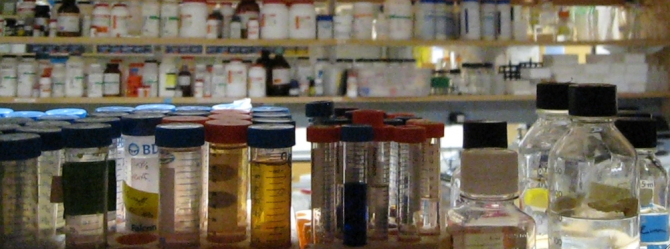20.109(S08):Prepare expression system (Day3)
From Course Wiki
Revision as of 20:26, 13 December 2007 by AgiStachowiak (Talk)
Contents
Introduction
Protocols
Part 1: prepare competent DE3 cells
- Pick up two 3 mL tubes of DE3 cells. These cells should be in or close to the mid-log phase of growth, which is indicated by an OD600 value of 04.-06.
- Measure the OD600 value of a 1:10 dilution of your cells. If the cells are not yet dense enough, return them to the rotary shaker in the incubator. Remember to balance your tubes! As a rule, your cells should double every 20-30 min.
- Once your cells have reached the appropriate growth phase, spin down 4 tubes of ~ 1.5 mL each, aspirate the supernatants, and resuspend in an equal volume of ice-cold calcium chloride (100 mM).
- Spin again for 1 min. The resultant pellets should occur as streaks down the side of the eppendorf tube, so be very carefule not to disturb the cells when aspirating.
- This time, resuspend each tube in 100 μL of CaCl2, then pool the tubes together.
- Incubate on ice for 1 hour.
- Meanwhile, label four eppendorfs (for three transformations and a no DNA control) and pre-chill them on ice. (You might label your mutant tubes as X#Z, where # is the residue number you are modifying, X is the original amino acid, and Z is the mutant acid. The example shown on Day 1 would be Y64D.)
Part 2: transform DE3 with mutant DNA
Part 3: count mutant colonies
When you have a spare moment today, count the colonies that arose on each of your transformed XL1-Blue plates. Do the control samples have no colonies? Do the different mutations appear to have different efficiencies?
